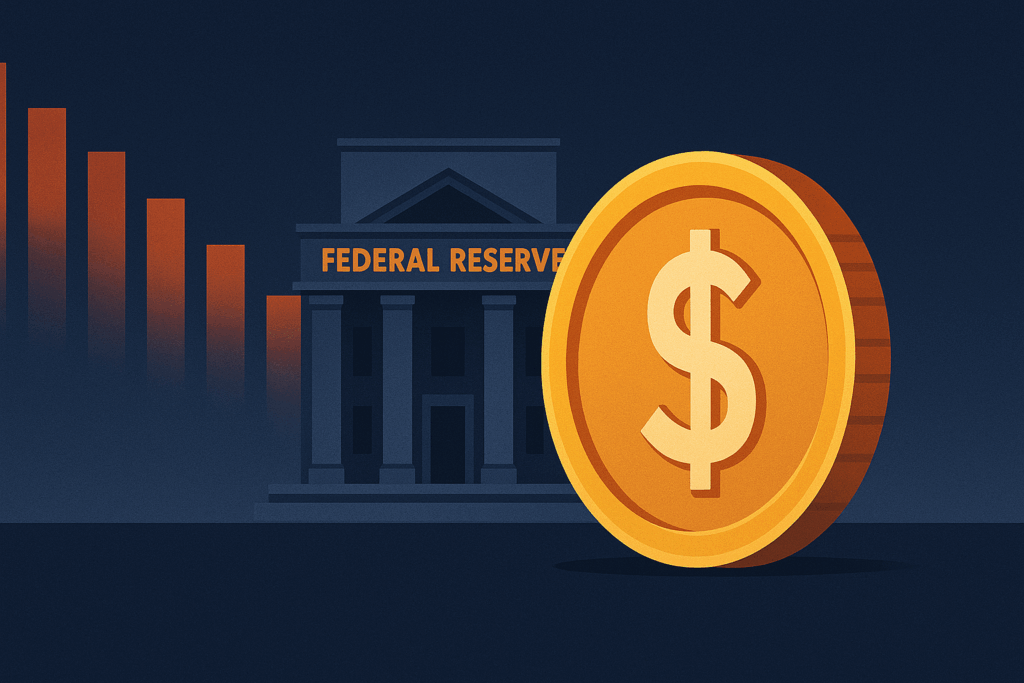Key Insights
- BlackRock’s Rick Rieder says the Fed could slash rates by 0.5% in September.
- July’s weak jobs data boosted expectations for a Fed rate cut, which explains the prediction
- Traders now fully expect at least two rate cuts by the end of the year.
According to the latest reports, BlackRock now believes the U.S. Federal Reserve could make a move in September and slash interest rates by 50 basis points.
The call comes after the stock and cryptocurrency markets were battered by a dismal U.S. jobs report in July. This took place while the labor market slowed.
Rick Rieder, BlackRock’s Chief Investment Officer, was the source of this prediction. He believes that the latest jobs data gives the Fed what it needs to justify easing.
What Triggered the Talk of a Fed Rate Cut by Traders & BlackRock?
In July, the U.S. economy added just 73,000 jobs, far below the 100,000 expected number. To make matters worse, job numbers from the previous two months were revised down by nearly 260,000 combined.
That brings the 3-month average to just 35,000 new jobs per month, or the weakest since the Covid-19 pandemic. This slowdown in hiring was one of the reasons for the ongoing market sell-off.
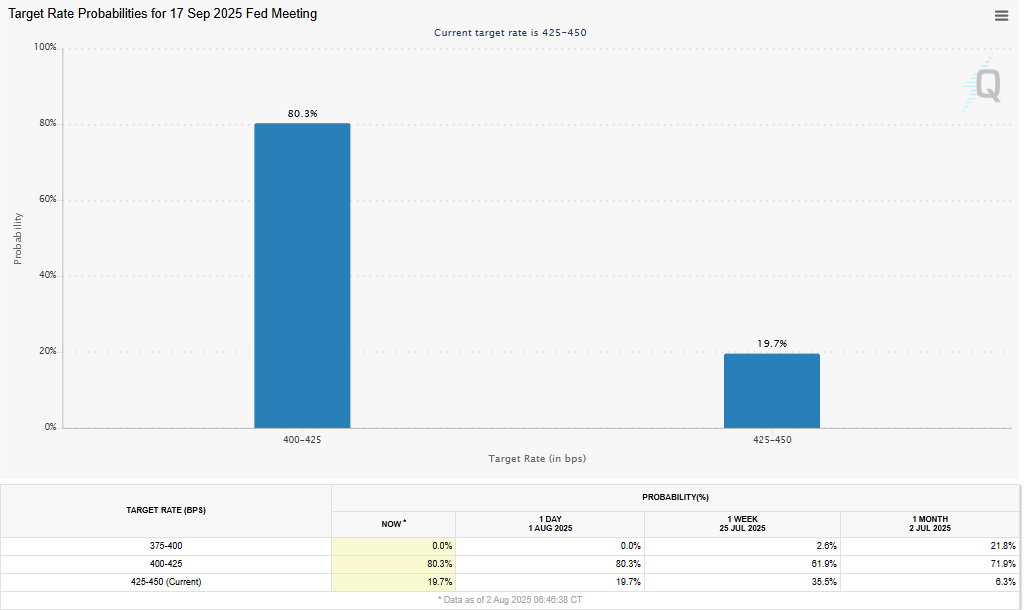
According to CME Group, Institutional investors like BlackRock and traders believe there’s an 80% chance of a Fed rate cut. This could take place in the September meeting. This is interesting because the odds were under 40% just one day earlier.
Could the Fed Deliver a Jumbo Rate Cut As Expected by BlackRock?
“If slack in the labour force builds at all, or we continue to see a below 100,000 jobs hiring rate persistently, we would expect the Fed to start moving rates lower,” Rieder said in a Bloomberg Interview.
BlackRock CIO isn’t the only one pushing the idea of a half-point Fed rate cut. Strategists at CreditSights also expect a 50 basis point cut in September. Two smaller cuts by the end of the year followed it.
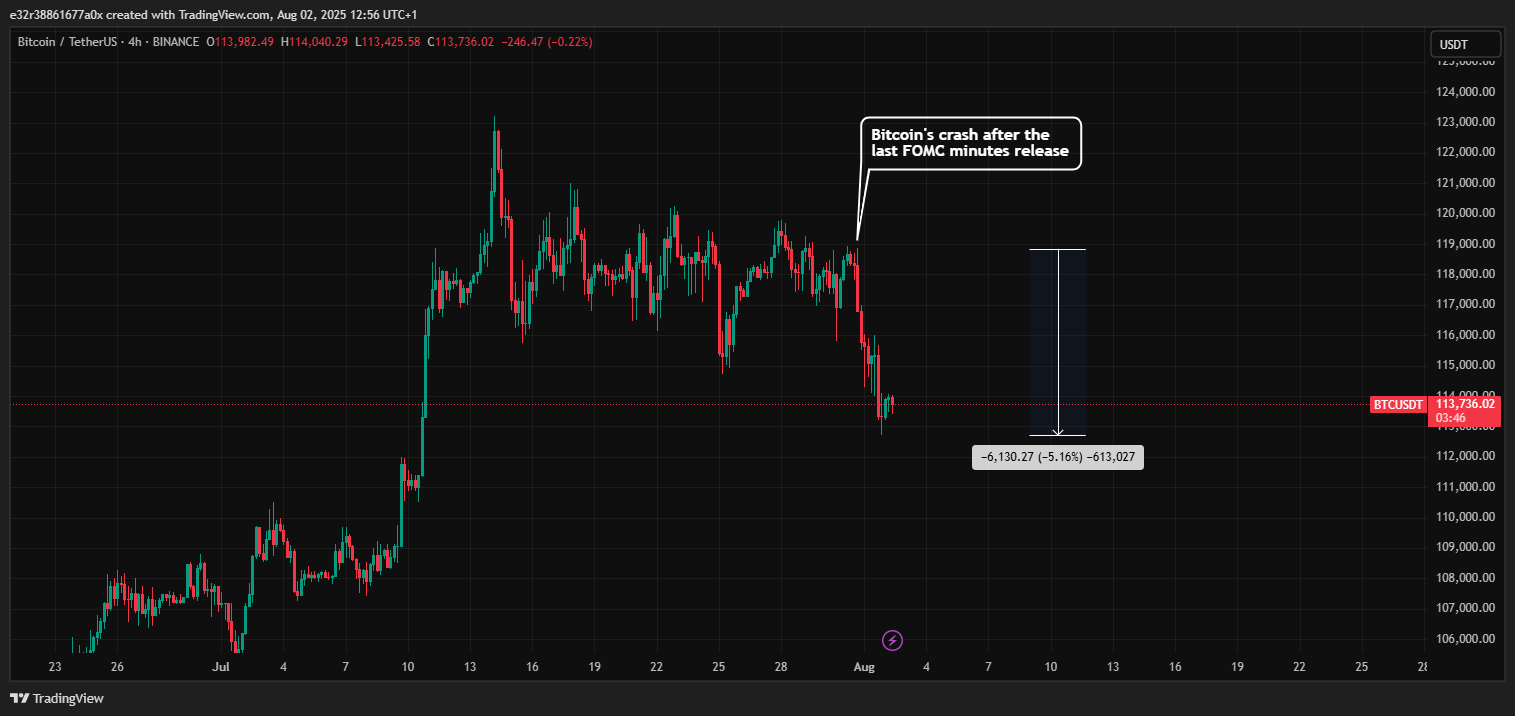
If that happens, it would be similar to what the Fed did in September last year when it kicked off its rate-cutting cycle. Back then, the economy also showed signs of weakening, which prompted the central bank to act.
“Could you do 50, similar to what happened last year? Yeah, I think so,” Rieder said during the interview on Bloomberg TV.
He added that a move of this size would likely not restart inflation. It is still moderate despite the new tariffs that continue to ripple across the markets.
Fed Officials Show Signs of Division
Amid the prediction by BlackRock, not everyone at the Fed agrees on what should happen next. Two Fed Governors, Christopher Waller and Michelle Bowman, voted against keeping interest rates unchanged at the July 30 meeting.
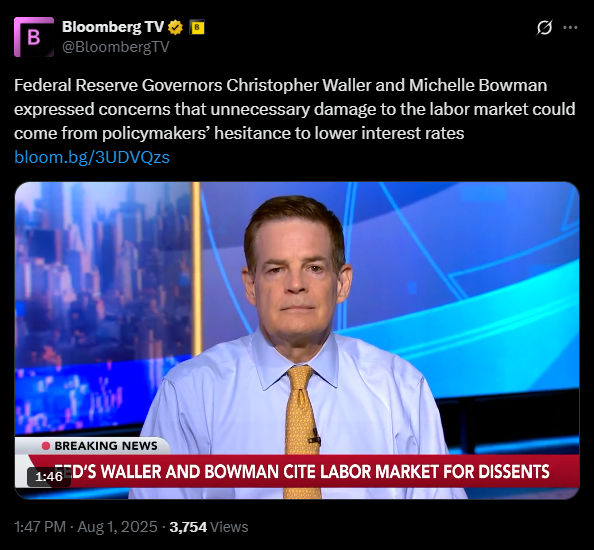
Both governors favored a quarter-point Fed rate cut and warned that waiting too long could hurt the job market. Fed Chair Jerome Powell, however, was more cautious and said there was no final decision yet.
He also pointed out the need to watch incoming data. This includes the effects of the tariffs imposed by the White House.
Bonds Up, Stocks and Crypto Down
The Bond markets responded quickly. Two-year Treasury yields fell 29 basis points, their biggest drop in the last two years. Investors snapped up bonds amid rising bets on lower rates ahead.
At the same time, stocks and crypto slid. The S&P 500 dropped nearly 2%, and the U.S. dollar lost ground as traders recalibrated their positions.
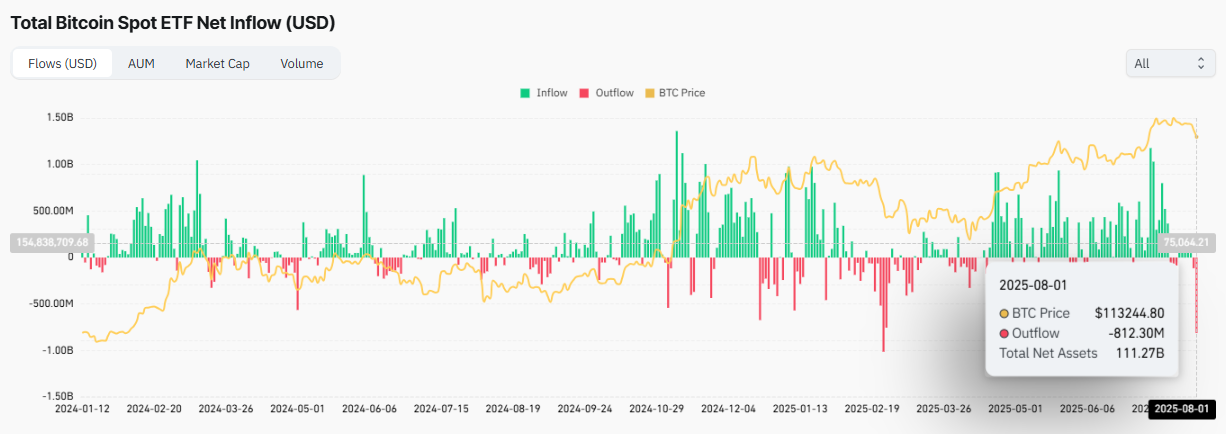
Bitcoin slid by around 5% from its 118,000 high on 31 July, as the ETF market bled a staggering $812 million. On the other hand, Ethereum ended its 20-day streak of inflows. It posted $152 million in outflows despite a combined $5 billion in the previous two weeks.
In short, the rate cut hopes gave bonds a substantial boost. However, it severely damaged investor sentiment in the equities, crypto, and currency markets.
Edward Harrison, Bloomberg macro strategist, continues to warn that incoming inflation from the tariffs could still sway Fed policy. However, the sheer size of the job miss is hard to ignore.
If labour conditions worsen and inflation remains manageable, the Fed may be forced to act sooner rather than later.

